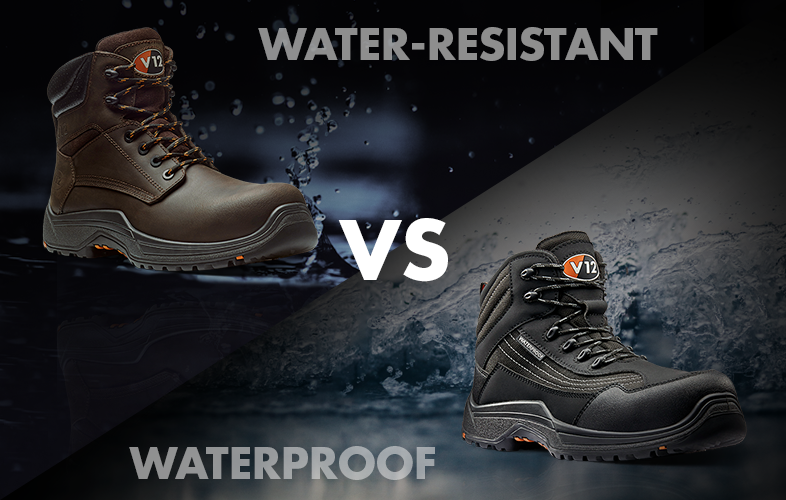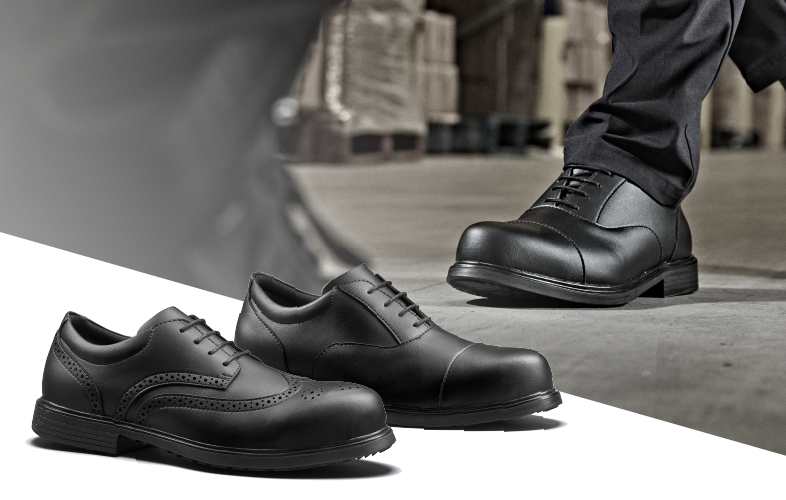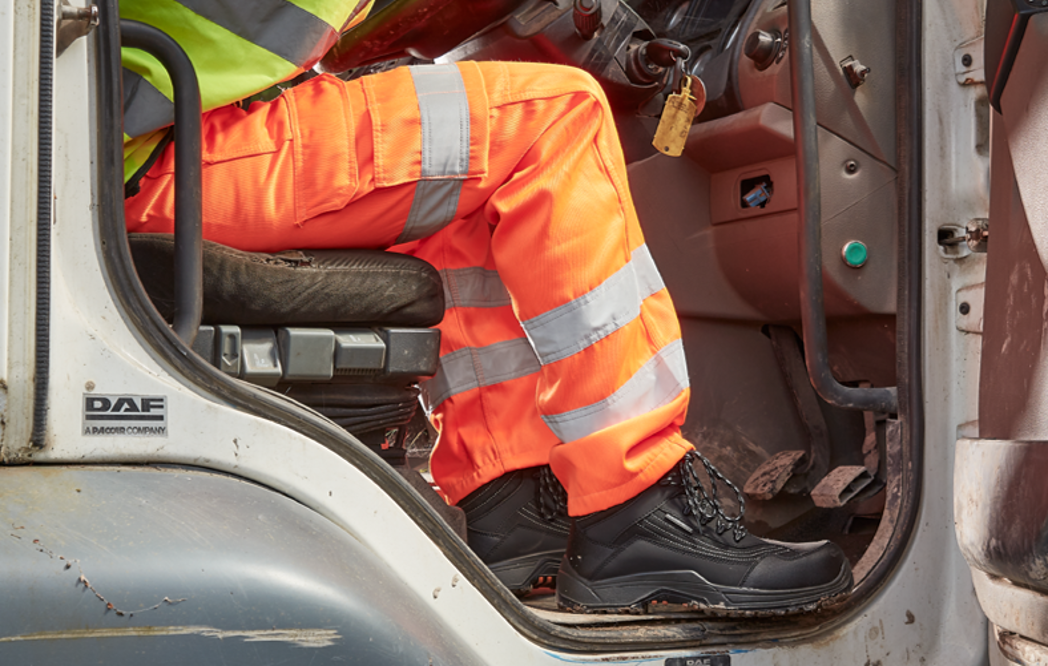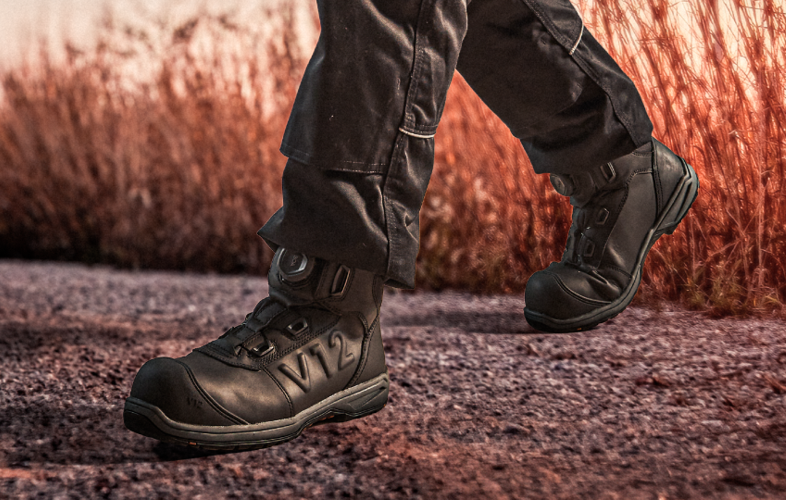Here’s a question we get asked a lot:
Is Water-Resistant the Same as Waterproof?
Short answer: No.
These terms sound similar, but they’re not interchangeable. Leather (or microfibre) uppers may repel low-level moisture, but this only makes them water-resistant. Only boots with a waterproof membrane keep your feet fully dry.
Here’s more about the differences.
Water-Resistant
Codes:
WRU (Water-resistant Upper) - for boots tested to the 2011 standards, or WPA (Water Penetration and Absorption) for boots tested to the 2022 standards. Both codes denote that the boot is water-resistant, meaning:
- It resists light rain and splashes
- The
uppers will keep some water outWater-resistant doesn't mean it keeps out water completely: it means it resists it for a short while, as long as the exposure is light.
Waterproof
WR (both 2011 and 2022 standards)
Waterproof work boots feature a special membrane behind the upper. This is designed to block water completely, even during dynamic movement (flexing) e.g. while the wearer walks in the boots when wet.
Why Dry Feet Matter
Moisture in your boots is more than uncomfortable. Wet feet can lead to:
- Blisters
- Itching
- Numbness
- Athlete’s foot
- Swelling
- Long-term vascular injuries
Maintaining dry feet however enhances focus, reduces distraction, and improves workplace safety.
Testing Waterproof Boots: The Water Flex Test
Waterproof boots must undergo the Dynamic Footwear Water Penetration Test, which bends them underwater for at least 80 minutes. If water ingress is under 3 cm², it's certified waterproof. Take a look below, and at some other footwear testing methods.
Identifying Waterproof Boots
It couldn’t be more simple
Just look inside the tongue and you'll see a breakdown of the spec. Look for "WR" - this is the code that signifies waterproofing, not water-resistance.
If you see a ‘WRU’ or ‘WPA’ code, this indicates the boot has a water-resistant upper, and importantly, isn’t waterproof - so they won't keep your feet dry in harsher watery conditions.
Another method of assessing if your work boots are waterproof is by their spec category number. If your boots are categorized from S4-S7, under the EN ISO 20345:2022 standards, they are waterproof by design.
Breathability: Staying Dry Inside and Out
Waterproof membranes are designed to act as a barrier to keep out water, but this also means they can block sweat and air from getting out of the boot too, causing hot and sweaty feet. But high-quality waterproof membranes - like GORE-TEX or Sympatex - block water from coming in, while at the same time allowing sweat to escape.
Which Boot Is Right for You?
Environment Type
Recommended Protection
Why
Indoor or light exposure (e.g. drizzle, for a cleaning role)
Water-resistant boot (WRU/WPA)
Greater breathability, adequate for short, infrequent water exposure
Outdoor or prolonged exposure to water/moisture (e.g. puddles/trenches)
Waterproof boot (WR, S4–S7)
Membrane fully blocks water ingress even during movement
Tip - S3 boots offer a base spec of a toecap, slip resistance, midsole and anti-static protection, but be cautious. Some S3 boots are waterproof, but not because this spec level guarantees full waterproofing. They will be waterproof because WR is specified - in other words, they will have had a waterproof membrane added.
Jobs like Rail, Construction, Grounds Maintenance and Energy often require waterproof hi-leg styles (e.g. with a bellows tongue and covered zip) for extra splash and submersion protection. Find out more about this here.
Summary: Your Three Takeaways
⋅ Water-resistant or waterproof - it’s the membrane that makes the difference.
⋅ Check if the boot is waterproof or water-resistant using the code (WR vs WRU/WPA) and whether the boot is S4–S7 rated (2022 standards only).
⋅ Match the boot to your conditions - don’t under or over spec your foot health! (Light wetness → WRU/WPA | Heavy or sustained water → WR / membrane needed)


.png?width=336&height=336&name=Foot%20Health-01-01%20(1).png)
%20(2).webp?width=390&height=298&name=V12%20waterproof%20symbol%20(e)%20(2).webp)




